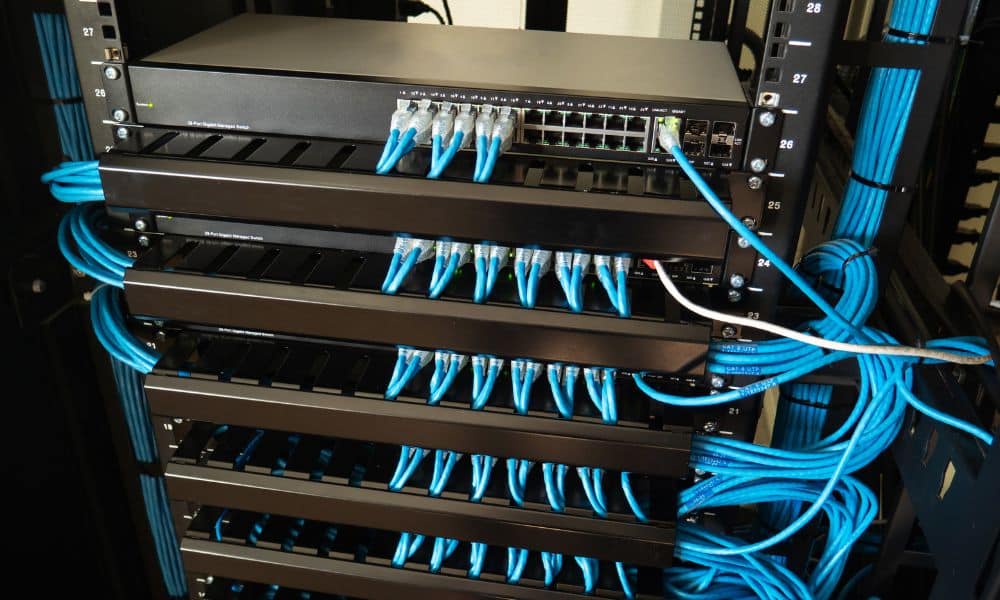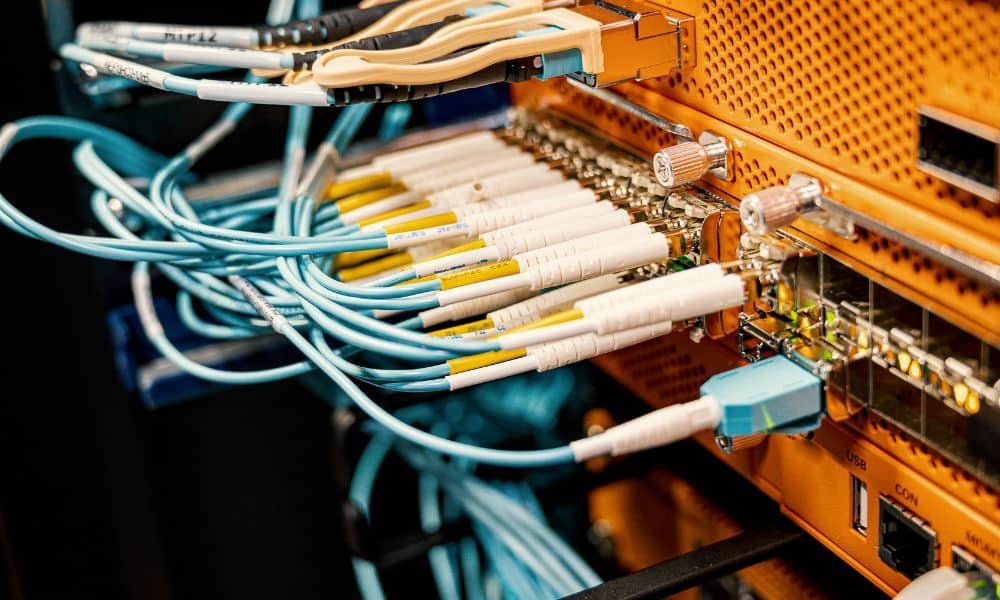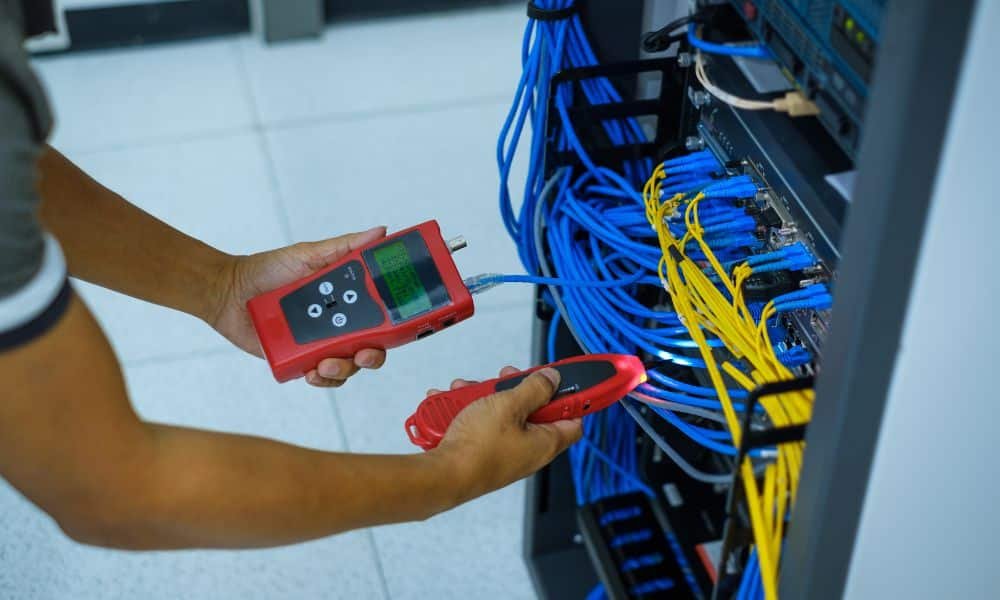In an era defined by lightning-fast data transfers, uninterrupted streaming, and the seamless exchange of information, cable networks remain a cornerstone of modern communication. These intricate networks of cables, often hidden beneath our streets and buildings, play a pivotal role in shaping our digital landscape. In this article, we embark on a journey through the world of cable networks, unveiling their undeniable relevance and shedding light on their types, benefits, and the ever-evolving trends that steer the course of this indispensable technology.
Understanding Cable Networks
What Are Cable Networks?
Define cable networks and their role in data transmission:
Cable networks are intricate systems of physical cables that enable the transmission of data, voice, and video signals between devices, networks, and users. They form the foundational infrastructure for various forms of communication, both locally and globally. Cable networks play a pivotal role in data transmission, providing reliable, high-speed connectivity.
Cable networks serve as the wired counterpart to wireless networks, offering an alternative method for data transfer that relies on physical connections rather than radio waves. These networks are employed in a variety of applications, from providing high-speed internet access to distributing cable television signals.

Mention how they differ from other network types, such as wireless networks:
While wireless networks utilize radio waves to transmit data over the air, cable networks rely on physical cables made of materials like coaxial, fiber optic, or Ethernet cables. This fundamental difference in transmission mediums leads to several distinctions:
- Reliability: Cable networks are often considered more reliable than wireless networks because they are less susceptible to interference and signal degradation caused by factors like distance and obstacles.
- Speed: Cable networks tend to offer higher data transfer speeds compared to many wireless connections, making them suitable for bandwidth-intensive tasks.
- Security: Cable networks are generally more secure due to the absence of wireless signal interception risks. Data transmitted through physical cables is less vulnerable to eavesdropping.
- Coverage: Wireless networks provide greater mobility and flexibility since they are not bound by physical cables. Cable networks are typically confined to specific locations.
How Cable Networks Work
Explain the principles of data transmission through cable networks:
Data transmission in cable networks operates on the principle of electrical or optical signals traveling through the physical cables. These signals represent binary data (0s and 1s) and are modulated to transmit information effectively. Key aspects of how cable networks work include:
- Signal Modulation: Data is converted into analog signals (continuous waveforms) for transmission over cables. Different modulation techniques are used based on the type of cable.
- Transmission Mediums: Cable networks can use various transmission mediums, including coaxial cables, fiber optic cables, and Ethernet cables. Each has its own advantages and use cases.

Discuss the key components, including cables, routers, and switches:
- Cables: Cables are the physical pathways that carry signals. Different types of cables are used in cable networks, each with specific characteristics. Coaxial cables are common for cable television and internet, while fiber optic cables are preferred for high-speed data transmission. Ethernet cables are widely used in local area networks (LANs).
- Routers: Routers are devices that manage data traffic within a network. They determine the most efficient path for data packets to travel from the source to the destination. Routers are essential for connecting different cable networks and ensuring seamless data transmission.
- Switches: Switches are used within local networks to direct data traffic. They operate at the data link layer of the OSI model and efficiently forward data packets to their intended destinations within the network.
Benefits of Cable Networks
Reliability and Stability
Cable networks are renowned for their consistent and stable connections, making them a trusted choice for various communication and data transfer needs. Cable networks provide a dependable level of connectivity, ensuring that users experience minimal disruptions and downtime. Unlike wireless connections, which can be affected by environmental factors and interference, cable connections maintain a steady signal quality.
Cable networks offer a stable platform for data transmission. This stability is especially critical for applications that demand a constant and uninterrupted connection, such as video conferencing, VoIP calls, and critical business operations.

Cable networks excel in areas with minimal signal interference. Unlike wireless signals, which can be susceptible to interference from other devices, physical obstacles, or electromagnetic interference (EMI), cable connections are insulated from these external factors. This makes cable networks highly reliable, even in environments where signal interference is a concern.
In regions where stable and reliable internet access is essential, cable networks shine as a robust solution. Whether it’s remote areas with challenging terrain or urban settings with dense populations, cable networks provide the consistency and reliability needed to keep people connected.
High-Speed Data Transmission
Explain how cable networks, especially fiber optics, enable high-speed data transfer:
Cable networks, particularly those employing fiber optic technology, are synonymous with high-speed data transmission. Here’s how they achieve exceptional data transfer rates:
- Fiber Optic Advantages: Fiber optic cables use light signals to transmit data, allowing for much higher speeds compared to traditional copper cables. These cables can transmit data at the speed of light, resulting in incredibly fast internet connections.
- Low Latency: Fiber optic networks have low latency, which means data packets travel quickly between source and destination. Low latency is crucial for applications that require real-time data transfer, such as online gaming and video conferencing.
- Bandwidth Capacity: Fiber optic cables offer a significantly higher bandwidth capacity than copper cables. This means they can handle more data simultaneously, making them ideal for situations with heavy data traffic.

Discuss their suitability for streaming, online gaming, and large file transfers:
Cable networks, especially those using fiber optics, are tailor-made for various bandwidth-intensive applications:
- Streaming: High-speed cable connections are essential for uninterrupted streaming of high-definition content on platforms like Netflix, Amazon Prime, and YouTube. Users can enjoy buffer-free streaming, even during peak usage hours.
- Online Gaming: Gamers benefit from the low latency and high-speed data transmission of cable networks. This reduces lag and ensures a responsive gaming experience, which is crucial for competitive online gaming.
- Large File Transfers: Businesses and individuals rely on cable networks to transfer large files quickly and efficiently. Whether it’s sharing multimedia content, collaborating on projects, or uploading and downloading sizable datasets, cable networks expedite the process.
The Role of Cable Networks in Businesses
Enterprise Networks
Cable networks form the backbone of modern enterprise networks, serving as the lifelines that keep businesses connected and operations running smoothly. Here’s an in-depth look at their significance:
- Communication: Cable networks provide businesses with reliable communication channels, enabling seamless voice and video communication. This is crucial for internal collaboration and external interactions with clients, partners, and customers.
- Data Sharing: Enterprise networks built on cable infrastructure allow for the efficient sharing and transfer of data among employees and departments. This fosters collaboration, accelerates decision-making processes, and enhances overall productivity.
- Collaboration: In the age of remote work and global teams, cable networks facilitate collaboration by connecting employees, regardless of their physical locations. This supports real-time collaboration tools, video conferencing, and cloud-based applications that are vital for modern businesses.

In the corporate world, high-speed and secure cable connections are paramount for several reasons:
- Productivity: High-speed connections enable employees to access data and applications quickly, reducing wait times and boosting productivity. Employees can collaborate efficiently and work with large files without delays.
- Data Security: Secure cable networks protect sensitive business data from external threats and unauthorized access. This is especially critical for industries that handle confidential information, such as finance, healthcare, and legal sectors.
- Competitive Edge: Businesses with fast and secure cable networks gain a competitive advantage. They can respond swiftly to market changes, deliver better customer experiences, and stay ahead of competitors.
Scalability and Future-Proofing
Businesses can increase their bandwidth as demands grow. This scalability ensures that the network can handle more devices, applications, and data-intensive tasks without compromising performance. As companies expand their physical locations or add new branches, cable networks can be extended seamlessly to accommodate these changes. Scalable cable networks integrate with cloud services, enabling businesses to leverage scalable cloud infrastructure for storage, applications, and computing resources.
Cable networks can support emerging technologies and higher bandwidth requirements. This adaptability ensures that the network remains relevant as new applications and devices are introduced. Cable networks are designed to work with various technologies and standards. This ensures that existing infrastructure can seamlessly integrate with future network upgrades and innovations. By investing in a robust cable network infrastructure, businesses protect their investments for the long term. They reduce the need for costly infrastructure overhauls when new technologies emerge.
Trends in Cable Networks
Advancements in Fiber Optic Technology
Fiber optic technology is undergoing continuous innovation, driving improvements in data transmission capabilities and signal quality. Here’s an exploration of recent advancements:
- Higher Bandwidth: Fiber optic cables are experiencing significant increases in bandwidth capacity. This means they can support even faster data transmission rates, making them ideal for handling the ever-growing demands of data-intensive applications, including 4K and 8K video streaming, virtual reality, and augmented reality.
- Improved Signal Integrity: Advancements in fiber optic technology have led to enhanced signal integrity. This translates to reduced signal loss over longer distances and improved resistance to environmental factors, ensuring that data reaches its destination with minimal degradation.
- Next-Generation Fibers: Researchers and manufacturers are developing next-generation optical fibers with unique properties, such as multicore fibers and hollow-core fibers. These innovations promise even greater data transmission capabilities and the potential to revolutionize various industries, including telecommunications and healthcare.

Cable Network Sustainability
Cable network providers are increasingly adopting energy-efficient technologies in their infrastructure. This includes optimizing data centers for reduced power consumption, using energy-efficient routing equipment, and implementing smart network management practices to minimize energy waste. Some cable network facilities are transitioning to renewable energy sources like solar and wind power to reduce their carbon footprint. This shift toward greener energy aligns with broader sustainability goals.
Cable manufacturers are exploring eco-friendly materials for cable production. This includes using recyclable materials in cable construction and reducing the environmental impact of cable manufacturing processes. Many cable network companies are implementing recycling programs to responsibly dispose of old or unused equipment and cables, preventing electronic waste from ending up in landfills.
5G and the Cable Network Connection
Cable networks provide the essential backhaul infrastructure for 5G. They serve as the high-capacity links connecting 5G cell towers (small cells) to the central data centers and the broader internet. This backhaul connection ensures that the immense data traffic generated by 5G devices can be efficiently managed and transmitted.
Cable networks, particularly fiber optic cables, deliver the necessary speed and capacity required for 5G networks to achieve their potential. The high-speed, low-latency nature of fiber optics is ideal for handling the massive data volumes associated with 5G applications like IoT devices, autonomous vehicles, and augmented reality.
As 5G continues to expand and evolve, cable networks will play a pivotal role in scaling up the backhaul infrastructure to support the growing number of 5G devices and applications. The synergy between cable networks and 5G is essential for delivering the promised ultra-fast, low-latency connectivity that 5G technology offers.

